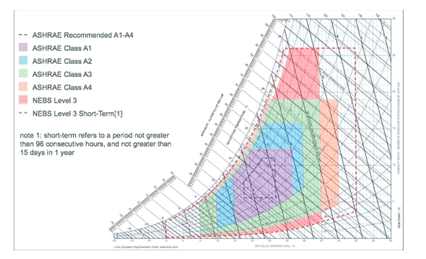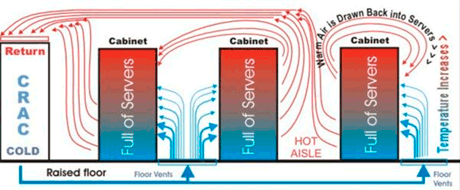The healthy operation of information technology equipment (ITE) requires specific environmental conditions. This has partly led to the establishment of several rules that guide the conditions under which data centers must be kept. Safety of the data center is crucial, so these rules are focused on the safety risks associated with data center equipment. Modern data centers are complex and large, so they use monumental amount of energy for cooling and power. Data center owners have started to recognize the importance of cooling for keeping data safe. Of the numerous safety issues that the operators must check, cooling technology ranks highly so there are a number of data center options.
Data Center Cooling Best Practices
The only approach to overcome the challenges of power shortage in armoring key data is to use energy efficient data centers. From experience, a number of best practices steps apply for designing and building of an energy efficient cooling system for data centers and indeed, any other mission critical facility. It is important to note that best practice approaches can be many, but the goal is all the same- preparing for the dynamic demand and growth of data centers. Here is what entails of a short list of these best practices:
1. Design Goals Of The Cooling System
Whether the data center is an upgrade or a new one, having design goals outlined is necessary. You can categorize the goals in terms of Cost, Adaptability, Availability, Reliability, Maintainability and Manageability.
2. Heat Load And Critical Load
This is where the equipment to be installed comes into focus. Since it is possible the equipment has not been identified at this point, designer’s experience comes in handy. Experience helps identify the typical load profile for various deployments.
3. Power Requirements
Establishing of power requirements is done on a per RLU Basis. RLU refers to rack location unit, which is the rack or cabinet foot print area.
4. CFM Requirements
Data center cooling will only be effective if it is done at the proper combination of temperature and air quantity to the load.
5. Computational Fluid Dynamic (CFD) Modeling
CFD modeling applies for both above the floor area and under floor air area. Watch a video demonstration of CFD simulation for Thermal Energy Storage.
6. Room Power Distribution Strategy
This strategy is based on these decisions:
- Location of power distribution units (PDUs)
- Overhead vs. under-the-floor cables
7. Cabinet Power Distribution Strategy
Dual branch circuits are common because dual power supply IT infrastructure is rampant.
8. Room & Cabinet Data Cabling Distribution Impact
There are several choices here including a home run of every data port.
9. Cooling Zone Strategy
Equipment cooling methods can be categorized as cabinet cooling, room cooling and row cooling.
10. Cooling Methodology
Air conditioner types to consider include Chilled water, Glycol cooled, Condenser water-cooled, and Air-cooled.
11. Cooling Delivery Methodology
This is all about the architectural attributes that have different effects on cooling performance, for instance, the location of the computer rooms and the height of the floor.
12. Floor Plan
Space constraints are a huge factor here.
13. Cooling Performance Monitoring
It is important to deploy sensors to monitor temperatures.
14. Approaches to Avoid
Some designers have been using various cooling techniques that do not augur well with data center options for cooling designs. Examples are isolated high-density RLUs and cabinets/ enclosures without internal baffles.
Data Center Cooling Requirements
Data center and cooling are inseparable. If cooling is not handled well, cooling power can easily match or even exceed power for running the IT equipment. Cooling requirements of the data center are widely based on the guidelines offered by the American Society of Heating, Refrigeration, and Air Conditioning Engineers (ASHRAE) Technical Committee, which are shown in the graph below. 
Fig 1: Temperature and Humidity Limits by ASHRAE
Data Center Power and Cooling Technologies
Conventionally, air-based cooling and liquid-based cooling are the major data center options for cooling.

Fig 2: Air Based Cooling For the Data Center
However, new cooling systems are coming up and changing the landscape completely. A good example is environmentally friendly data center at Google, which uses seawater. Another innovation is the data center smart assistant technology, for example AdeptDC, that helps manage cooling to avoid wastage. Machine learning and smart cooling work in tandem to read GPU and CPU temperatures. This type of software can help the data center save energy. In yet another amazing invention, data center cooling robots are now being used to monitor temperature and humidity levels in the server. The OneNeck robot sensor hovers across the cabinet scanning for hotspots. So much is happening in the technology world so even more technologies are bound to emerge.
Conclusion about Data Center Cooling Options
Choosing the best data center option for cooling depends on several factors such as budget, room size and power density. Air-cooling seems to be the most pocket friendly option for low budgets. Between the extremes, it is important to adhere to best practices, such as the ones we have highlighted.










